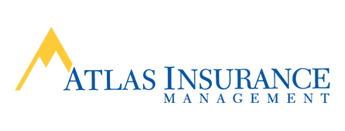 Types of risks covered
Types of risks covered
Types of risks covered The number and types of risks, which must be planned for and managed, depends greatly on geography, business structure, economic sector and other factors, such as the political environment.
A captive insurance company is best seen as an integral part of the business model, helping to make that model more robust in the face of risk.
Large Deductible Programs. As a complement to a business’s standard commercial insurance program, a captive can insure large deductibles or retentions taken on policies such as Workers Compensation, General Liability and Auto Liability. By having a captive reimburse the large deductible or retention, a company can retain and manage a layer of exposure and thereby capture the financial benefits of doing so. Other lines of business to consider include Employment Practices Liability, Errors & Omissions Liability and Pollution Liability.
General liability. Various liability risks are some of the most commonly insured risks by captives. Claims are typically settled several years after premiums are paid, which means that premiums earn investment income over a long period of time.
Workers’ compensation. Planning for this category of risk can be especially important for middle market firms in manufacturing, distribution, construction and other similar sectors.
Extended warranty. Extended warranties provide customers with a real benefit for which they are willing to pay. Financing the associated risk in a captive creates a new profit center and can have significant tax advantages.
Business interruption. Insure against debilitating business interruption, whether due to weather, facility failure, catastrophic event or other issues.
Environmental. These complexities can be as large as water and brownfield issues, or as unexpected as mold mitigation.
Medical malpractice. Efficiently managing this category of risk is essential, whether for large healthcare concerns or for private practices.
Employee Benefits including Medical Stop-Loss. Captives are being used increasingly in this field as employers struggle to understand and fund their obligations under the ACA. A captive insuring Medical Stop-Loss allows the employer to self-insure a specific limit of exposure and take advantage of the financial benefits of retaining and managing claims within that limit.
Supply chain. Insuring a supply chain against fluctuations and interruptions can be essential to the longevity of the enterprise.
Reputational Risk and Cyber Liability. These risks (which overlap to some extent) have emerged in recent years as the number one concern of corporate risk managers. Captives have provided effective coverage for them several years ahead of the commercial market.
Legal expenses. A potentially catastrophic exposure for businesses of any size and one for which the commercial market provides limited or inadequate coverage.
Directors and officers. A low frequency, high severity exposure often insured by captives.
Property Damage Loss Waiver. A property damage loss waiver (PDLW) program allows the owners of multi-family or student housing to transfer the financial liability for tenant caused damages to a captive. This is accomplished by collecting a waiver fee from the tenants to purchasing a ‘tenant caused damage’ policy from their captive.
